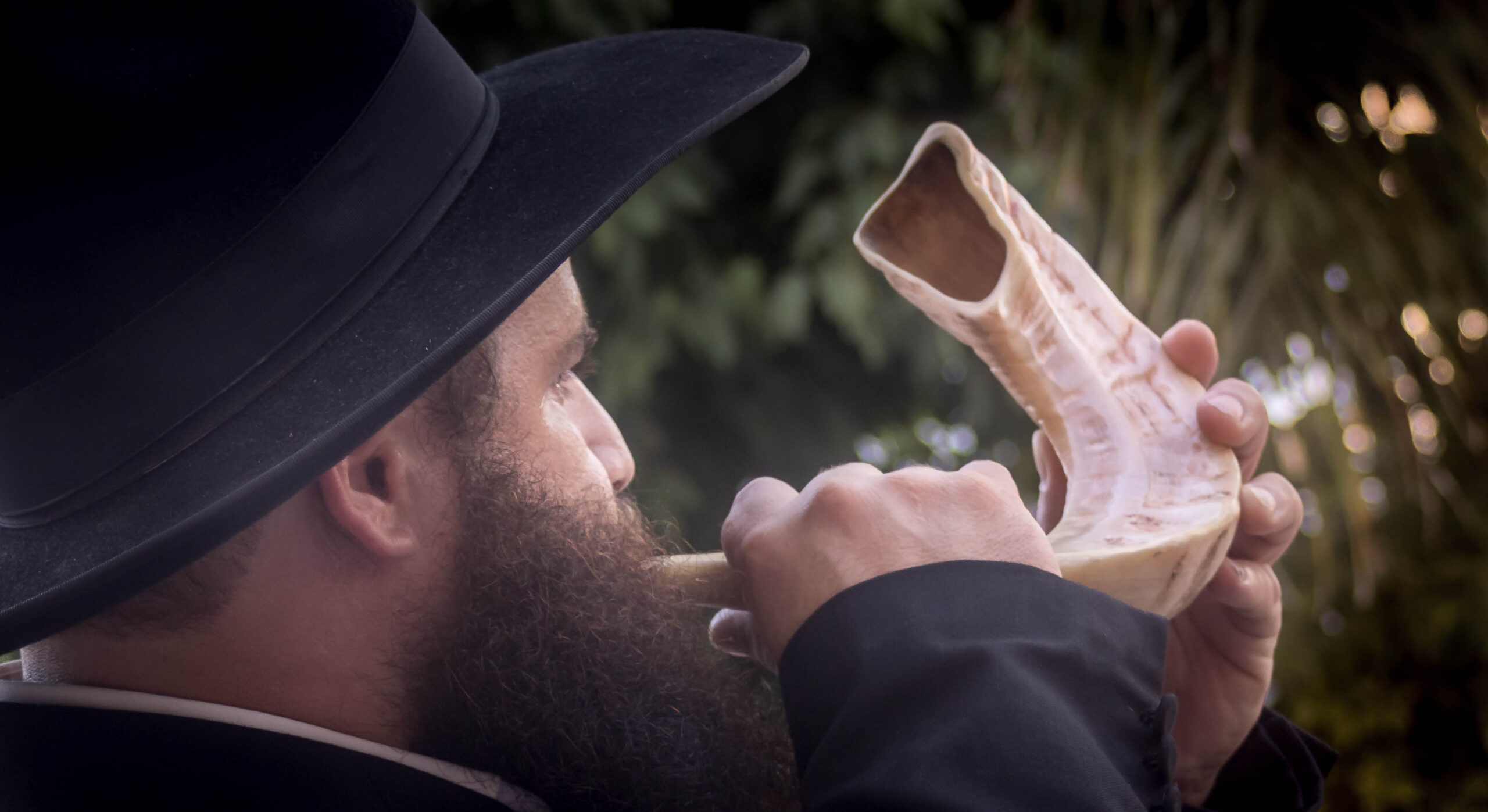
Blowing the shofar for Rosh Hashanah. Photo by מינוזיג – MinoZig courtesy of Wikimedia Commons
SUNSET SUNDAY, FRIDAY, SEPTEMBER 15: Rich dishes made with honey, paired with blasts from the shofar, mean it’s Rosh Hashanah, the Jewish New Year—and it’s also the start of the High Holidays.
Do you know someone who is Jewish? Wish him or her L’shanah tovah—“For a good year!”
On the first and second days of the Jewish month of Tishri, Rosh Hashanah is celebrated by Jews around the world. In Hebrew, Rosh Hashanah means “head of the year,” or “first of the year,” and many Jews use this period of time to make resolutions and commitments for self-improvement.
NEWS THIS YEAR
JEWISH SUPERHEROES CELEBRATE—Long-time fans of comic books know that Benjamin Jacob “Ben” Grimm is arguably the most famous Jewish superhero in Marvel Comics. He’s better known as “The Thing” and he’s famous for the “rocky” appearance of his skin as the powerhouse co-founder of The Fantastic Four. This week—on Friday to mark the holiday—the Disney+ streaming service plans to debut a new episode of its Marvel’s Spidey and his Amazing Friends series featuring The Thing on Friday, this week, in an episode called, “An UnBEElievable Rosh Hashanah.” Variety’s website reports on this new holiday episode and includes a 1-minute video clip, as well.
BEES ARE BOOMING IN NEW YORK—Since beekeeping was officially legalized in New York City in 2010, according to the Jewish Telegraphic Agency, local sources of honey have become popular for Rosh Hashanah. The JTA reports: “September is a busy month for New York City’s beekeepers. Rosh Hashanah, and its custom to put honey on the holiday table, jacks up demand—and demand in a city with 1.6 million Jews is steep.”
‘WE TRY TO REMEMBER, NOT FORGET’
Compared with secular New Year celebrations, writes Rabbi Lenore Bohm in this inspiring reflection on the holiday, “the Jewish New Year, while joyful, is spiritual, thoughtful, and reflective. We try to remember, not forget. We visit the graves of loved ones. We look for opportunities to be especially generous and charitable. We gather with close friends and family for delicious, home-cooked meals. We express hope that we have grown in the year gone by.” (You’ll also enjoy the list of holiday questions Rabbi Bohm lists at the end of her column, which all of us—whatever our faith—would benefit from asking.)
On Rosh Hashanah, work is not permitted and many more traditional adherents spend the day in the synagogue. The shofar, a ram’s horn blown like a trumpet, is one of the holiday’s most famous symbols—but Rosh Hoshanah also comes with special readings and prayers for a good new year.
THE HIGH HOLIDAYS
What are the High Holidays? Sometimes referred to as “High Holidays,” or “High Holy Days,” this is the period between Rosh Hashanah and Yom Kippur, and usually the phrase includes the 10 days in between. One description of this period says, in essence, that G_d opens the books of judgment as the new year begins and finally, on Yom Kippur, the judgment for the year is “sealed.”
Yom Kippur starts at sunset on Sunday, September 24 this year.
The popular harvest festival Sukkot, then, starts on Friday, September 29.
HONEY, APPLES AND BREAD: A SWEET NEW YEAR
Of the sweet foods consumed on Rosh Hashanah, none is more popular than honey. Jerusalem, biblically referred to as “the land of milk and honey,” is yet another reason to eat honey on this special holiday. Jewish families like to serve apples or bread dipped in honey, or create dishes that incorporate these ingredients.
Sweet recipes: Looking to bake up something sweet and scrumptious this Rosh Hashanah? Try forward.com’s granola baked apples. For an entire menu of Rosh Hashanah recipes, check out AllRecipes, Epicurious, Food Network and Martha Stewart.

Tell Us What You Think